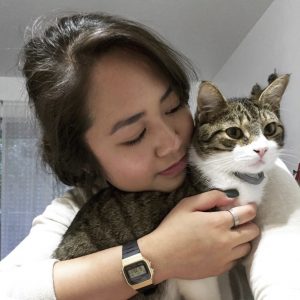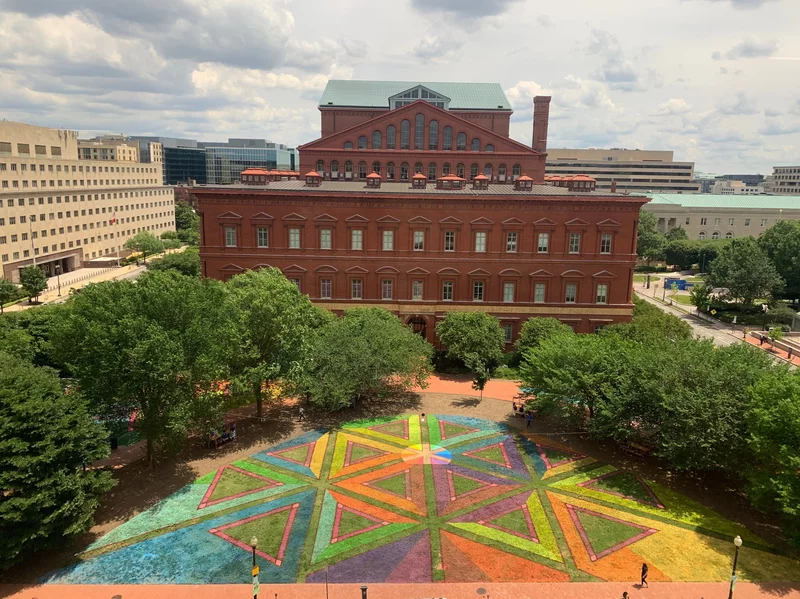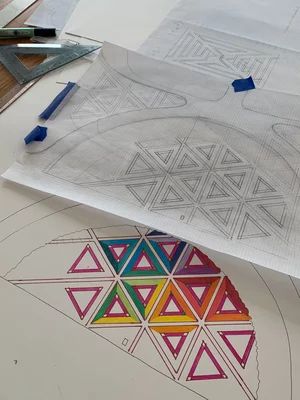Another academic year has passed, and it’s time for three new editors to take the reins of the Museum Studies blog! A huge thank you to Alexandra, Abigail, Eric, and Sayyara for their hard work on the blog over the past year, and good luck with your future endeavors. We’re so excited to follow in your footsteps and keep producing great content for the Museum Studies blog!
Now, introducing your new editors…
Claudia Haines
 Hello everyone! My name is Claudia Haines, and I am a second-year student in the Art History and Museum Studies MA program here at Tufts. Growing up in central Pennsylvania, I always loved art and history and looked forward to visiting museums, but it wasn’t until my first year at the University of Pittsburgh that I learned it was possible to study museums in the classroom. That realization, combined with a visit to the Metropolitan Museum of Art during a family trip to New York City in 2017, led to my decision to make art and museums my full-time focus. I graduated with my BA in Art History and Museum Studies in 2020, and I have loved continuing my studies at Tufts during the past year!
Hello everyone! My name is Claudia Haines, and I am a second-year student in the Art History and Museum Studies MA program here at Tufts. Growing up in central Pennsylvania, I always loved art and history and looked forward to visiting museums, but it wasn’t until my first year at the University of Pittsburgh that I learned it was possible to study museums in the classroom. That realization, combined with a visit to the Metropolitan Museum of Art during a family trip to New York City in 2017, led to my decision to make art and museums my full-time focus. I graduated with my BA in Art History and Museum Studies in 2020, and I have loved continuing my studies at Tufts during the past year!
Over the past several years, I have held positions at a range of museums and cultural institutions, including the University of Pittsburgh’s Nationality Rooms, the Carnegie Museum of Art, the Cumberland County Historical Society, and the U.S. Army Heritage and Education Center, and I’ve also contributed to several exhibitions at the University Art Galleries at both Pitt and Tufts. These positions have helped me to discover my interests in curatorial work, research, and museum education, and I’m thrilled about the opportunity to develop and share those interests as a blog editor this year!
E. Jane Lapasaran
 Hi everyone! My name is Jane Lapasaran and I am beginning my second year in the Museum Education MA program. I currently live in Virginia and work at the Smithsonian National Museum of the American Indian where I assist in educational programs and gallery safety. I am originally from Florida, where I received my BA in Anthropology from the University of Florida. During my undergraduate studies, I worked at the Florida Museum of Natural History and the Cade Museum for Creativity and Invention. At the Florida Museum, I discovered my love for working with butterflies and moths and I helped teach camps where students and younger children could learn about curating and working in natural history collections. At the Cade Museum, I focused more on teaching and worked as an educator, leading tours and different hands-on activities for visitors of all ages. This museum also helped me find a particular passion for working with visitors of varying levels of accessibility and developing programming and specialized tours to ensure that visitors from all backgrounds could have a meaningful museum experience.
Hi everyone! My name is Jane Lapasaran and I am beginning my second year in the Museum Education MA program. I currently live in Virginia and work at the Smithsonian National Museum of the American Indian where I assist in educational programs and gallery safety. I am originally from Florida, where I received my BA in Anthropology from the University of Florida. During my undergraduate studies, I worked at the Florida Museum of Natural History and the Cade Museum for Creativity and Invention. At the Florida Museum, I discovered my love for working with butterflies and moths and I helped teach camps where students and younger children could learn about curating and working in natural history collections. At the Cade Museum, I focused more on teaching and worked as an educator, leading tours and different hands-on activities for visitors of all ages. This museum also helped me find a particular passion for working with visitors of varying levels of accessibility and developing programming and specialized tours to ensure that visitors from all backgrounds could have a meaningful museum experience.
My enthusiasm for museums has carried me through many different jobs and internships, and I have learned so much about how different museums reach their audiences and how these meaningful relationships between museums and their neighbors can transform communities. Being at Tufts has exposed me to even more styles of engagement and teaching, and I look forward to using this blog to share my excitement and discoveries with other museum lovers!
Lucy Wickstrom
 Hi everyone! My name is Lucy Wickstrom, and I’m a second-year student in the History and Museum Studies MA program here at Tufts. I grew up on the central coast of California, where my mom often took me and my two younger sisters to our local children’s museum so that we could play, explore, and learn about the world around us. I’ve loved history since elementary school and have a passion for learning about the human beings who lived before us—what they dreamed, who they loved, and how they saw the world. I adore the detective work involved in digging through sources, trying to get into the heads of people from the past.
Hi everyone! My name is Lucy Wickstrom, and I’m a second-year student in the History and Museum Studies MA program here at Tufts. I grew up on the central coast of California, where my mom often took me and my two younger sisters to our local children’s museum so that we could play, explore, and learn about the world around us. I’ve loved history since elementary school and have a passion for learning about the human beings who lived before us—what they dreamed, who they loved, and how they saw the world. I adore the detective work involved in digging through sources, trying to get into the heads of people from the past.
I studied history at Cal Poly in San Luis Obispo, but didn’t know that I wanted to pursue a career in the museum field until I interned at the Point San Luis Lighthouse in Avila Beach, California. At this beautiful historic site with a breathtaking view of the Pacific Ocean, I discovered just how much I loved combing through dusty archives, staging objects inside the historic house, and sharing stories about the people who once made the lighthouse their home. The light in visitors’ eyes while they took in their surroundings, and the excitement in their voices as they asked questions, wanting to learn more, filled me with joy, and I knew that I wanted to spend the rest of my life sharing history in this way.
I chose Tufts for my graduate studies because of the incredible museum studies program, and because I have dreamed of living in the Boston area since my early teenage years. My period of focus is early American and United States history, so it is a dream come true for me to explore all the incredible museums and historic sites in New England. At Tufts, I have learned so much about the world of museums already. I have worked as a research assistant to my history advisor, met amazing peers and professors, and loved every moment. I’m so excited to have the opportunity to run this blog with my brilliant classmates, and I can’t wait to continue learning here at Tufts.









